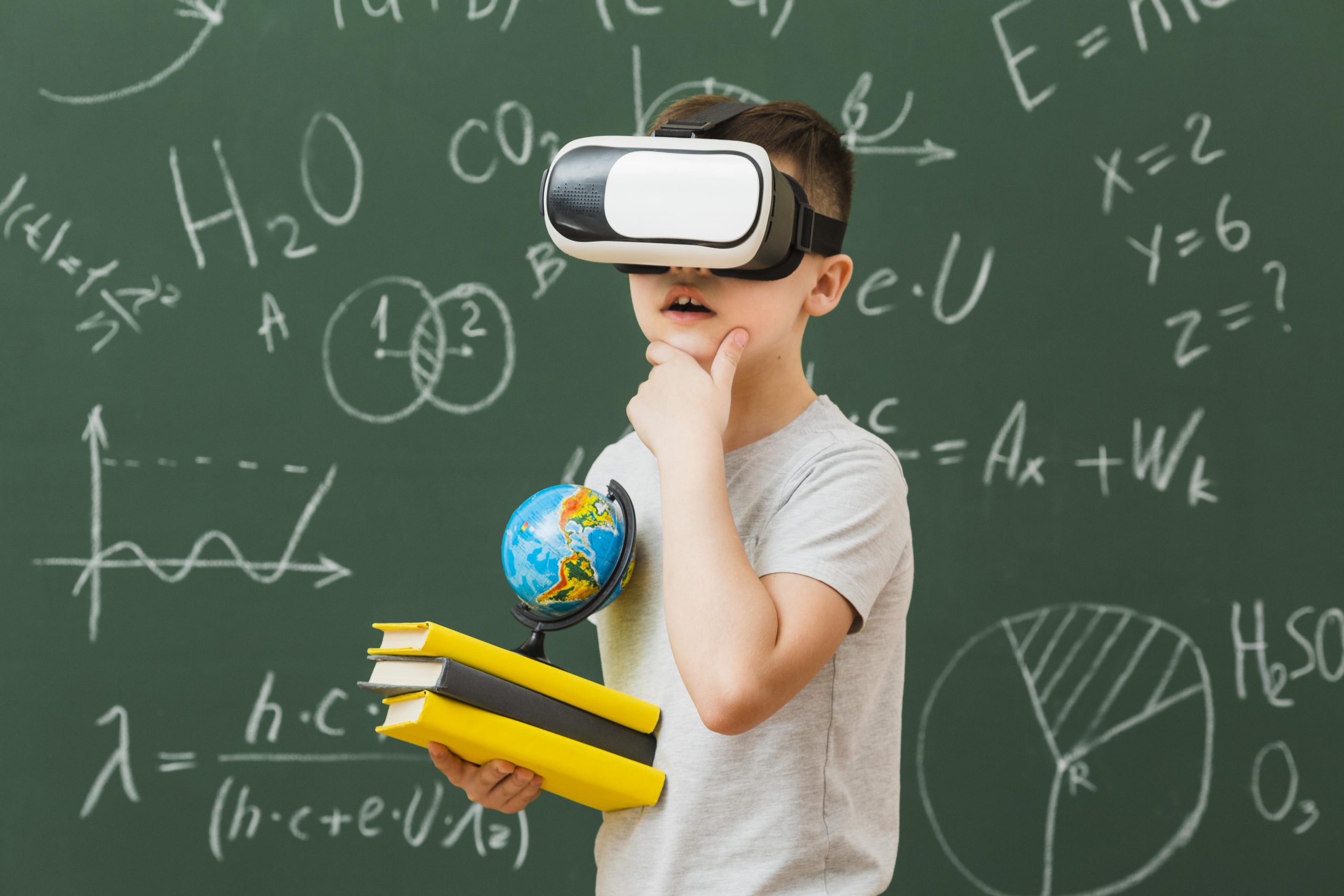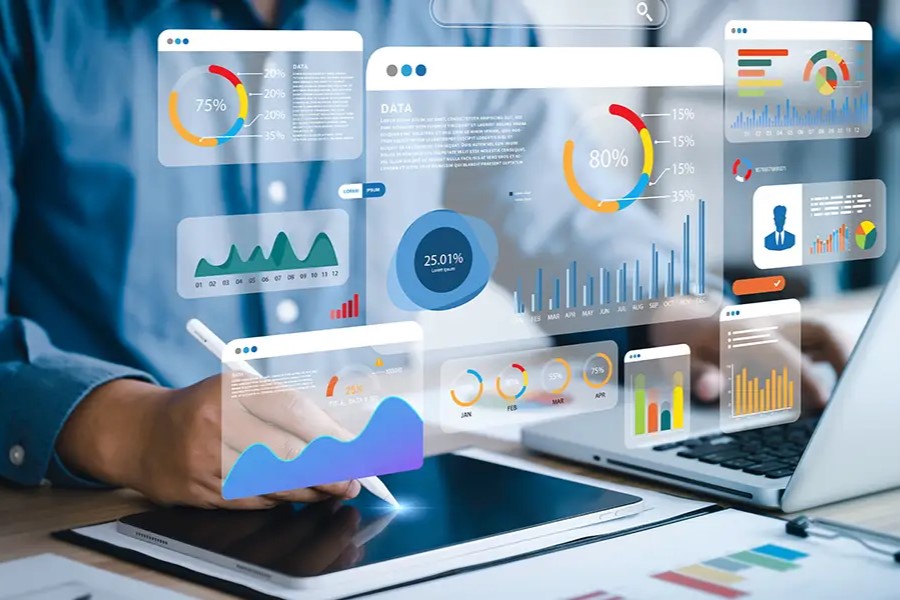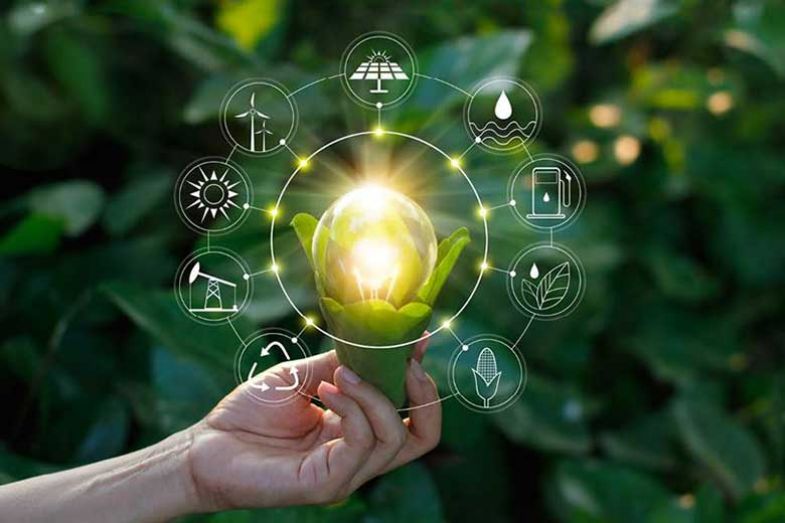

The Future of Science Education:
Embracing Innovation and Technology
By: STEPS
The landscape of science education is rapidly evolving, propelled by technological advancements and innovative teaching methodologies. As we progress further into the 21st century, science education is becoming increasingly interactive, technology-driven, and oriented towards preparing students for complex, real-world challenges. This article delves into the emerging trends that are shaping the future of science education, with a focus on the integration of technology and innovation in teaching and learning.
The Role of Technology in Science Education
Technology's integration into science education represents a revolutionary shift in how scientific concepts are taught and learned. Traditional science classrooms, once limited by physical constraints and static resources, are now being transformed into dynamic environments enriched by digital tools and resources.
Advancements in Science Technology
One of the most significant technological advancements in science education is the development of virtual labs, augmented reality (AR), and virtual reality (VR). These tools allow students to conduct experiments and explore scientific phenomena in a safe, cost-effective, and accessible manner. Virtual labs provide an opportunity for hands-on experimentation without the need for physical lab spaces, thus overcoming geographical and financial barriers. AR and VR technologies further enhance this experience by creating immersive environments where students can visualize and interact with complex scientific concepts.
For instance, AR can overlay digital information onto physical objects, helping students understand abstract concepts through interactive visualizations. VR, on the other hand, can simulate real-world scenarios and experiments, allowing students to engage in activities that would be impractical or impossible in a traditional lab setting.
Interactive Science Learning
Interactive whiteboards, digital simulations, and educational apps are now common in science classrooms. These technologies facilitate personalized learning experiences, enabling students to visualize complex scientific processes and conduct virtual experiments. Digital tools provide immediate feedback, allowing for a more responsive and adaptive learning environment. Additionally, educational apps and simulations offer students a wealth of information at their fingertips, fostering a deeper understanding of scientific concepts and promoting digital literacy.
Interactive technologies also support collaborative learning by enabling students to work together on projects and share their findings with peers. This collaborative approach not only enhances the learning experience but also prepares students for a future where teamwork and digital proficiency are essential skills.
Emerging Trends in Science Education
As we look to the future, several emerging trends are poised to reshape science education. These trends reflect a shift towards more engaging, student-centered approaches that prioritize exploration, collaboration, and problem-solving.
Project-Based Learning (PBL)
Project-Based Learning (PBL) is gaining traction as an effective method for teaching science subjects. PBL involves students working on long-term projects that address real-world problems, requiring them to apply scientific principles, conduct research, and collaborate with peers. This approach not only deepens students' understanding of scientific concepts but also helps develop critical thinking, communication, and teamwork skills.
For example, a PBL activity might involve students designing and conducting experiments to address a local environmental issue, such as water pollution. Through this project, students would not only learn about scientific methods and environmental science but also gain practical experience in problem-solving and collaboration.
Environmental Science Studies
The growing awareness of environmental issues has made environmental science a crucial component of the science curriculum. This field explores the interactions between human activities and the natural world, fostering a sense of responsibility and urgency to address environmental challenges. By integrating environmental science studies into the curriculum, educators can inspire students to become future environmental scientists, policymakers, and activists.
For instance, students might study the impact of climate change on local ecosystems or investigate sustainable practices that can reduce carbon footprints. This focus on environmental science helps students understand the broader implications of scientific research and its relevance to global challenges.
Biotechnology in Education
Biotechnology, a rapidly evolving field, is increasingly being incorporated into science education. Biotechnology encompasses a wide range of topics, from genetic engineering to the development of sustainable biofuels. By exposing students to the latest advancements in biotechnology, educators can spark interest in this cutting-edge industry and prepare students for careers in biotechnology and related fields.
For example, students might explore genetic engineering techniques or learn about the development of biofuels as part of their science curriculum. This exposure to biotechnology not only enhances students' understanding of modern science but also provides them with valuable skills for future careers in science and technology.
Science Education Reform
To effectively prepare students for the future, science education must undergo comprehensive reform. This includes updating curricula to reflect emerging science subjects, adopting interdisciplinary approaches, and emphasizing the development of 21st-century skills.
Global Science Curriculum
In an increasingly interconnected world, a global science curriculum is essential for preparing students to think globally and collaborate across cultures. Such a curriculum would expose students to international perspectives and challenges, helping them understand different cultural contexts and work together on global scientific projects. This global approach to science education is crucial for developing a generation of scientists and citizens who can address global challenges collaboratively.
For instance, a global science curriculum might include studies on global health issues, international environmental policies, or collaborative research projects with students from other countries. This approach not only broadens students' perspectives but also prepares them for careers in a globalized world.
Science Research in Schools
Encouraging science research in schools allows students to engage in original scientific inquiry. By participating in research projects, students learn how to formulate hypotheses, design experiments, analyze data, and communicate their findings. This hands-on approach to learning deepens students' understanding of science and inspires them to pursue careers in research and innovation.
For example, students might work on a research project to investigate the effects of different variables on plant growth. This experience not only enhances their scientific skills but also fosters a passion for discovery and innovation.
Innovations in Science Teaching and Learning
The future of science education is closely linked to innovations in teaching and learning. As we face significant real-world challenges, such as climate change and pandemics, science education must evolve to address these issues effectively.
Industry 4.0 and STEM Education
The advent of Industry 4.0, characterized by advancements in technology such as big data, autonomous robots, and cybersecurity, underscores the importance of equipping students with skills like critical thinking, creativity, and teamwork. These competencies are essential for solving complex problems and thriving in a future job market dominated by STEM trends.
Education systems must adapt to these changes by fostering a learning environment that promotes both lower- and higher-order thinking skills. Effective science teaching methods, such as problem-solving-based learning, project-based learning, and inquiry-based learning, engage students in active learning and deepen their understanding of scientific concepts.
Virtual Labs and Digital Tools
The integration of virtual labs, augmented reality, and educational apps, along with distance teaching strategies, offers innovative platforms for interactive science learning. These tools have become indispensable for ensuring access to science education, especially during disruptions such as the COVID-19 pandemic. They not only facilitate continuity of education but also prepare students for a digitally fluent future.
For instance, virtual labs allow students to conduct experiments remotely, while AR and VR technologies provide immersive learning experiences. Distance teaching platforms like Zoom and Google Meet enable educators to connect with students and deliver engaging science lessons, regardless of physical location.
Conclusion
The future of science education is bright, with technological advancements and innovative teaching methodologies leading the way. By embracing these trends and integrating new science subjects into the curriculum, educators can provide students with a comprehensive and engaging science education that prepares them for the challenges and opportunities of the future. As we move forward, it is essential to continue exploring and implementing strategies that make science education more relevant, accessible, and inspiring for all students.



